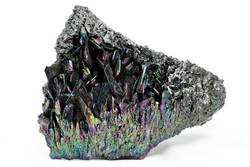Unique platform for MOS devices
With demonstrated suitability for high-power and high-temperature applications combined with significant energy savings, SiC is the next big thing in the world of power electronics. SiC occurs in many different crystal structures called polytypes, the most stable being 4H-, 6H-, 15R- and 3C-SiC. Although researchers across the world have poured time and effort into developing innovative electronics with this material, immature interfaces with the silicon dioxide (SiO2) insulating layer or metal contacts are stymieing device high performance. This may only be the case with 4H-SiC. However, elaboration of 3C- or 15R-SiC polytypes at temperatures exceeding 2 000 °C is much more challenging compared with 4H-SiC. NETFISIC (Training network on functional interfaces for SiC) was an EU-funded initial training network consisting of 12 European partners from 7 countries. Its main target was to explore several routes for improving both 4H-SiC interfacial and bulk properties, while also seeking growth solutions to 3C- and 15R-SiC polytypes. The main targeted applications were metal-oxide semiconductor (MOS) capacitors and Schottky diodes. Newly recruited SiC scientists (16 in all) rotated through all partner labs that shared in their training to enhance not only individual expertise but also knowledge transfer and collaboration amongst labs. Scientists generated new knowledge on the growth mechanism and properties of 3C- and 15R-SiC polytypes, mainly by using vapour deposition techniques. Doping of 4H-SiC with the not so commonly used germanium demonstrated unexpected yet noticeable improvement in the polytype's electronic properties. A great deal of effort was also devoted to improving SiC/SiO2 interfaces, mainly for MOS applications. Charge pump measurements proved a reliable method for in-depth interface analysis. Besides MOS-based structures, additional work was carried out on junction gate field-effect transistors and Schottky barrier diodes. NETFISIC activities were aimed at advancing the state of SiC technology for improved power devices in harsh environments. In addition to strengthening the EU's position in a huge global market, the commercialisation of outcomes will reduce energy consumption and carbon dioxide emissions for important financial and environmental benefits as well.
Keywords
Power electronics, silicon carbide, polytypes, metal-oxide semiconductor, Schottky diodes

